
A Hawaiian hale offers a place to gather in center of Georgia O’Keeffe exhibit at New York Botanical Garden (photo by twi-ny/mdr)
The New York Botanical Garden
Enid A. Haupt Conservatory, LuEsther T. Mertz Library Art Gallery
2900 Southern Blvd., Bronx
Tuesday – Sunday through October 28, $10-$28
718-817-8700
www.nybg.org
hawai‘i slideshow
In 1939, Georgia O’Keeffe was offered a commission from the Hawaiian Pineapple Company, later known as Dole, to go to Hawai‘i and create artwork for an ad campaign. The fifty-one-year-old famous artist accepted the proposal, taking it as a chance to explore a state she had never visited before. It turned out to be nine weeks that reshaped her art and her views of nature and beauty; the New York Botanical Garden, which has previously celebrated the work of such artists as Claude Monet and Frida Kahlo, is now exhibiting “Georgia O’Keeffe: Visions of Hawai‘i,” a lovely show that details the flora of what would become the fiftieth state in the Union in 1959, as experienced by O’Keeffe. Twenty of the Wisconsin-raised O’Keeffe’s paintings are on view in the garden’s sixth-floor LuEsther T. Mertz Library Art Gallery; they were last seen as a set in 1940 at an American Place, the midtown gallery run by her husband, photographer Alfred Stieglitz. “If my painting is what I have to give back to the world for what the world gives to me, I may say that these paintings are what I have to give at present for what three months in Hawai‘i gave to me,” O’Keeffe wrote in her artist statement for the show. “Maybe the new place enlarges one’s world a little. . . . Maybe one takes one’s own world along and cannot see anything else.” The NYBG display includes “Waterfall — No. 1 — ’Iao Valley — Maui, 1939,” a green mountain range with a narrow stream of water flowing down the center; the gorgeous “Hibiscus with Plumeria,” an extreme close-up of the flowering plant; and, side-by-side, the two works that the Hawaiian Pineapple Company eventually used in their ad campaign, “Heliconia’s Crab’s Claw Ginger” and “Pineapple Bud.” Outside the gallery are large-scale reproductions of photos O’Keeffe took in Hawai‘i, a digital version of her sketchbook, and copies of the ads in magazines.
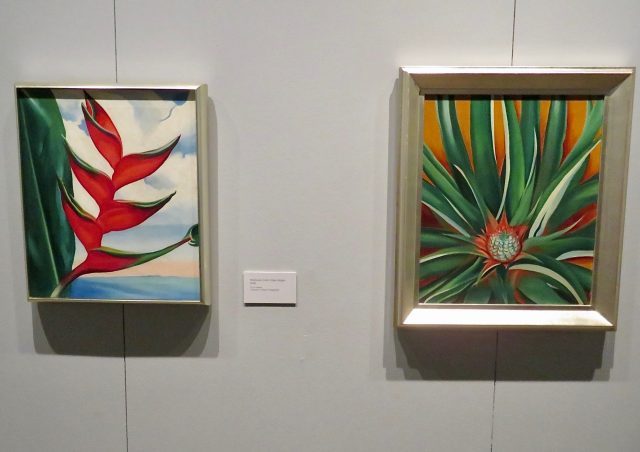
Two of Georgia O’Keeffe’s Hawai‘i paintings were used in ad campaign (photo by twi-ny/mdr)
Two floors down is the short documentary Off in the Faraway Somewhere: Georgia O’Keeffe’s Letters from Hawai’i, in which Sigourney Weaver narrates excerpts of letters O’Keeffe sent back home to Stieglitz, who is voiced by Zach Grenier. “It was as beautiful as anything I’ve ever seen,” O’Keeffe wrote about the ocean views. Down the hall is “Flora Hawaiiensis: Plants of Hawai‘i,” a history of flora on the Hawaiian Islands, divided into native plants, canoe plants (brought by the first human visitors), and post-contact plants, introduced after Captain James Cook’s 1778 landing there. The walk to the Enid A. Haupt Conservatory along Garden Way is lined with hanging lights by Hawaiian-Chinese sculptor Mark Chai inspired by plants in O’Keeffe’s paintings; in the round pond is “Heliconia Loop,” the large, circular hole in the middle serving as a kind of viewing scope for the surrounding trees. (As a bonus, the work lights up at night.)
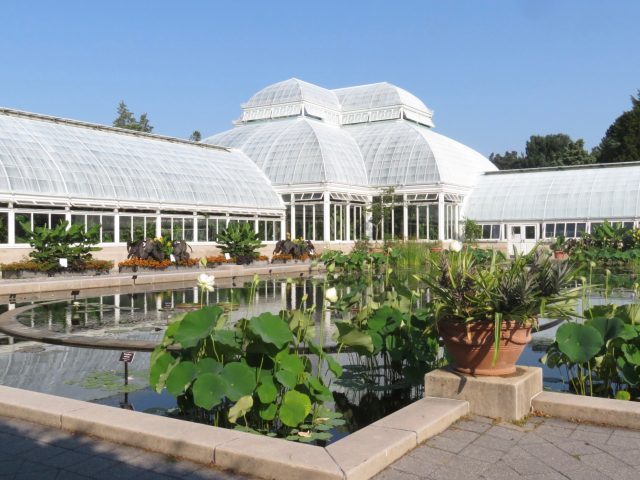
The Enid A. Haupt Conservatory celebrates Georgia O’Keeffe’s love of Hawai‘i both inside and out (photo by twi-ny/mdr)
The centerpiece of the exhibition is, of course, the display in the conservatory, where hundreds of plantings have been added to create a Hawaiian-like atmosphere. The colorful plants and trees, both inside and outside, include heliconia, pineapple, kava, breadfruit, lotus, white angel’s trumpet, bird-of-paradise, hibiscus, cup of gold vine, Hawaiian tree fern, flamingo flower, ti plant, coconut palm, ohia lehua, jackfruit, red rosemallow, Arabian coffee, taro, banana, Maui wormwood, screw-pine, frangipani, sacred lotus, sweet-potato, sugar cane, candlenut tree, Indian-mulberry, air-potato, Malaysian-apple, and bottle gourd, among others. Visitors can take a break in a traditional hale, a structure made of wooden poles, natural cords, and a pili-grass thatched roof, all surrounded by plants. In conjunction with the Poetry Society of America, poems on white boards pop up on the path, by Brandy Nālani McDougall (“Māui,” “Red Hibiscus in the Rain,” “Yellow Orchids”), Puanani Burgess (“Awapuhi”), Kahikāhealani Wights (“Koa”), Sage U’ilani Takehiro (“Kou Lei”), Juliet S. Kono (“Silverswords”), and several by former US poet laureate W. S. Merwin (“Islands,” “Remembering Summer”). “I am looking at trees / they may be one of the things I will miss most from the earth / though many of the ones I have seen / already I cannot remember,” Merwin writes in “Trees.” Curated by Theresa Papanikolas, PhD, of the Honolulu Museum of Art, “Georgia O’Keeffe: Visions of Hawai‘i” more than establishes just how unforgettable the state can be.
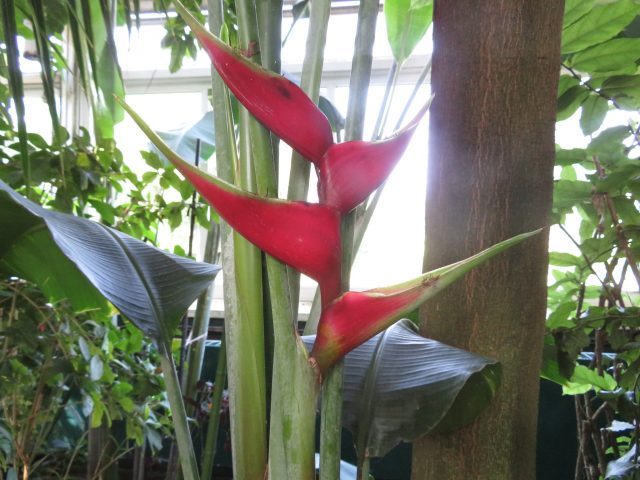
The heliconia is one of the many plants that inspired Georgia O’Keeffe when she was in Hawai‘i (photo by twi-ny/mdr)
The exhibit is supplemented with special events throughout its run, which ends October 28. On July 28 and 29, Celebrate Hawai‘i Weekend features “The History of Hawaiian Tattooing,” “‘Iolani Palace’s Queen Gowns,” and the NYBG Fashion Walk. “Aloha Nights” ($18-$38) take place on August 4 and 18 and September 1 and 8, with an evening viewing, interactive storytelling hula lessons, lei-making demonstrations, and live music. Hula Kahiko and Hula Auna demonstrations will be held on Saturdays and Sundays through September 30. And artisan demonstrations of coconut kiʻi puppet-making, lei-making, Hawaiian instrument crafting, poi-making, and more are set for Saturday and Sunday afternoons as well. E hauʻoli!

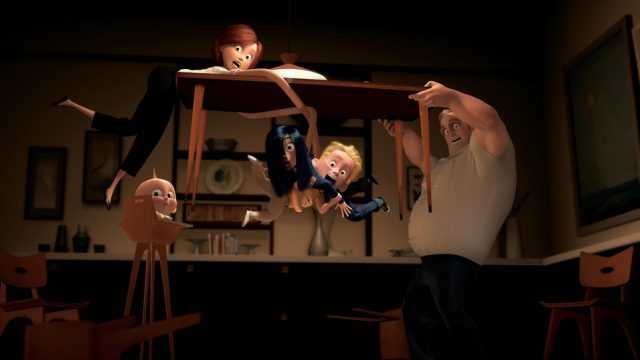





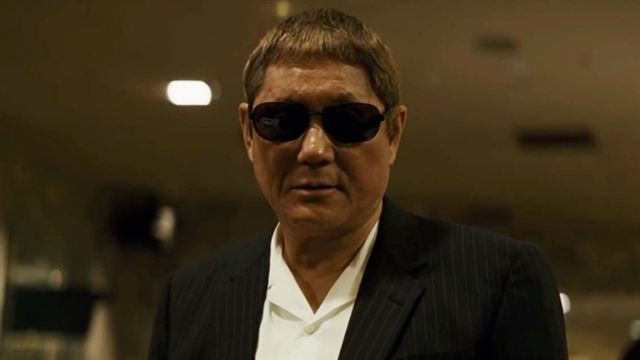
 The annual Japan Cuts series continues July 28 with the New York premiere of Takeshi Kitano’s Outrage: Coda, the finale in his yakuza series that began in 2010 with Outrage, followed two years later by Beyond Outrage. It’s not exactly the meeting of the five families in The Godfather when clan leaders get together as former stock trader Nomura (Ren Osugi) considers stepping down from his role as boss and selecting a replacement. Jockeying for various positions are the old school Nishino (Toshiyuki Nishida), the big, not too bright Hanada (Pierre Taki), the deeply pensive Nakata (Sansei Shiomi), and the sharp, cool Chang (Tokio Kaneda), who seems to have stepped right out of an episode of the original Hawaii Five-O. Detective Shigeta (Yutaka Matsushige) is on the case, watching it all very carefully, especially when round-faced Otomo (Kitano, who goes by the name Beat Takeshi as an actor) returns after a stint on Jeju Island in Korea.
The annual Japan Cuts series continues July 28 with the New York premiere of Takeshi Kitano’s Outrage: Coda, the finale in his yakuza series that began in 2010 with Outrage, followed two years later by Beyond Outrage. It’s not exactly the meeting of the five families in The Godfather when clan leaders get together as former stock trader Nomura (Ren Osugi) considers stepping down from his role as boss and selecting a replacement. Jockeying for various positions are the old school Nishino (Toshiyuki Nishida), the big, not too bright Hanada (Pierre Taki), the deeply pensive Nakata (Sansei Shiomi), and the sharp, cool Chang (Tokio Kaneda), who seems to have stepped right out of an episode of the original Hawaii Five-O. Detective Shigeta (Yutaka Matsushige) is on the case, watching it all very carefully, especially when round-faced Otomo (Kitano, who goes by the name Beat Takeshi as an actor) returns after a stint on Jeju Island in Korea.
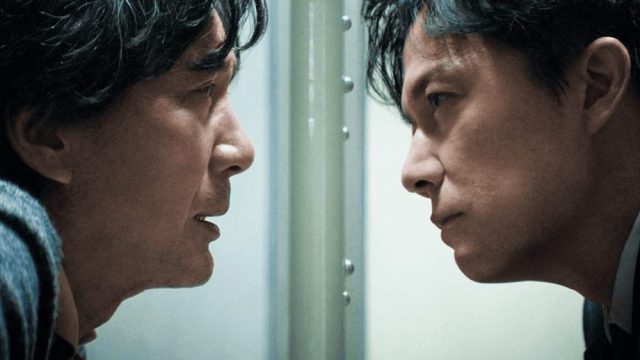
 Japanese auteur Hirokazu Kore-eda, the master of the intimate, intricate family drama, changes gears in the gripping legal thriller The Third Murder. Kore-eda, whose Shoplifters won the Palme d’Or at Cannes this year, started his career making documentaries; since he turned to fiction, often inspired by actual events (including in his own life), his films —
Japanese auteur Hirokazu Kore-eda, the master of the intimate, intricate family drama, changes gears in the gripping legal thriller The Third Murder. Kore-eda, whose Shoplifters won the Palme d’Or at Cannes this year, started his career making documentaries; since he turned to fiction, often inspired by actual events (including in his own life), his films — 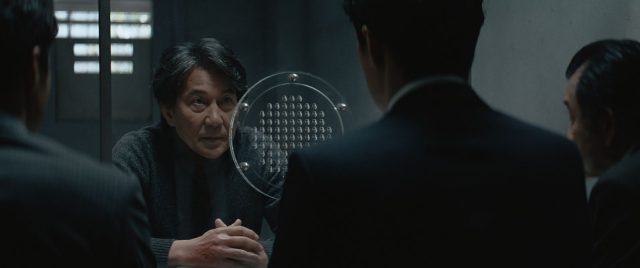
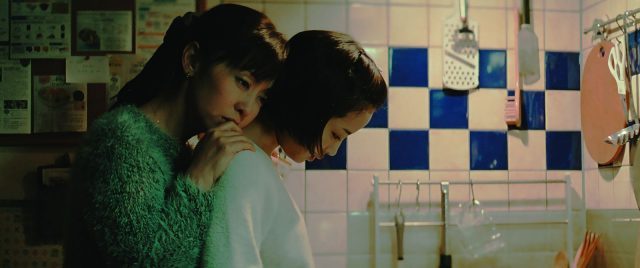
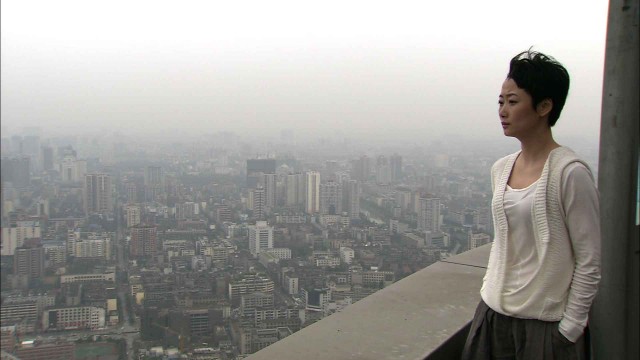
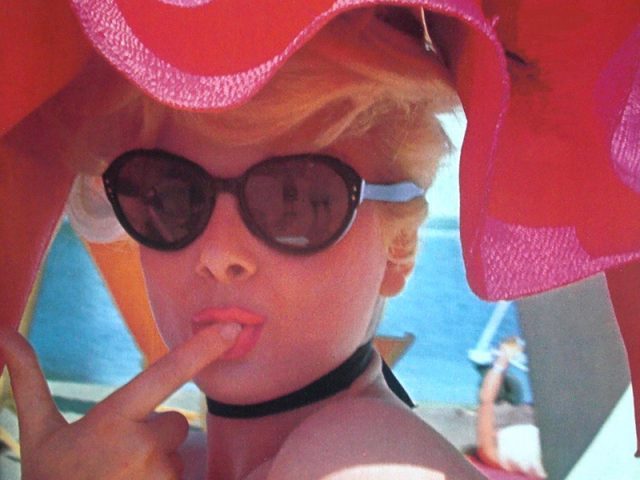
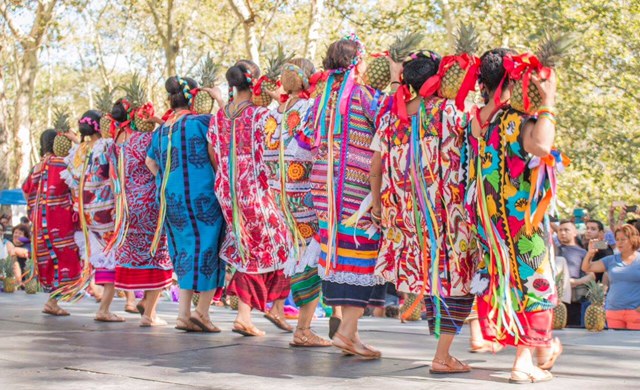

 BAMcinématek has teamed up with the
BAMcinématek has teamed up with the 